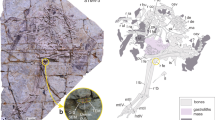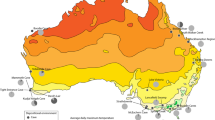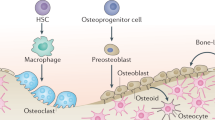Abstract
Bone is the key innovation underpinning the evolution of the vertebrate skeleton, yet its origin is mired by debate over interpretation of the most primitive bone-like tissue, aspidin. This has variously been interpreted as cellular bone, acellular bone, dentine or an intermediate of dentine and bone. The crux of the controversy is the nature of unmineralized spaces pervading the aspidin matrix, which have alternatively been interpreted as having housed cells, cell processes or Sharpey’s fibres. Discriminating between these hypotheses has been hindered by the limits of traditional histological methods. Here, we use synchrotron X-ray tomographic microscopy to reveal the nature of aspidin. We show that the spaces exhibit a linear morphology incompatible with interpretations that they represent voids left by cells or cell processes. Instead, these spaces represent intrinsic collagen fibre bundles that form a scaffold about which mineral was deposited. Aspidin is thus acellular dermal bone. We reject hypotheses that it is a type of dentine, cellular bone or transitional tissue. Our study suggests that the full repertoire of skeletal tissue types was established before the divergence of the earliest known skeletonizing vertebrates, indicating that the corresponding cell types evolved rapidly following the divergence of cyclostomes and gnathostomes.
This is a preview of subscription content, access via your institution
Access options
Access Nature and 54 other Nature Portfolio journals
Get Nature+, our best-value online-access subscription
$29.99 / 30 days
cancel any time
Subscribe to this journal
Receive 12 digital issues and online access to articles
$119.00 per year
only $9.92 per issue
Buy this article
- Purchase on Springer Link
- Instant access to full article PDF
Prices may be subject to local taxes which are calculated during checkout




Similar content being viewed by others
References
Donoghue, P. C. J. & Keating, J. N. Early vertebrate evolution. Palaeontology 57, 879–893 (2014).
Donoghue, P. C. J. & Sansom, I. J. Origin and early evolution of vertebrate skeletonization. Microsc. Res. Tech. 59, 352–372 (2002).
Smith, M. M. & Hall, B. K. Development and evolutionary origins of vertebrate skeletogenic and odontogenic tissues. Biol. Rev. 65, 277–373 (1990).
Halstead, L. B. Calcified tissues in the earliest vertebrates. Calcif. Tissue Int. 3, 107–124 (1969).
Halstead Tarlo, L. B. Psammosteiformes (Agnatha) - A review with descriptions of new material from the Lower Devonian of Poland. I - General part. Palaeontol. Polonica 13, 1–135 (1964).
Halstead, L. B. The heterostracan fishes. Biol. Rev. 48, 279–332 (1973).
Ørvig, T. Histologic studies of ostracoderms, placoderms and fossil elasmobranchs. 6. Hard tissues of Ordovician vertebrates. Zool. Scr. 18, 427–446 (1989).
Denison, R. H. Ordovician vertebrates from western United States. Fieldiana Geol. 16, 131–192 (1967).
Bystrow, A. P. The microstructure of skeleton elements in some vertebrates from Lower Devonian deposits of the USSR. Acta Zool. 40, 59–83 (1959).
Gross, W. Die fische des mittleren Old Red Südlivlands. Palaeont. Abh. 18, 123–156 (1930).
Gross, W. Histologische studien am aussenskelett fossiler agnathen und fische. Palaeontogr. Abt. A 83, 1–60 (1935).
Donoghue, P. C. J. et al. Synchrotron X-ray tomographic microscopy of fossil embryos. Nature 442, 680–683 (2006).
Tafforeau, P. et al. Applications of X-ray synchrotron microtomography for non-destructive 3D studies of paleontological specimens. Appl. Phys. A 83, 195–202 (2006).
Rucklin, M. et al. Development of teeth and jaws in the earliest jawed vertebrates. Nature 491, 748–753 (2012).
Sanchez, S., Ahlberg, P. E., Trinajstic, K. M., Mirone, A. & Tafforeau, P. Three-dimensional synchrotron virtual paleohistology: a new insight into the world of fossil bone microstructures. Microsc. Microanal. 18, 1095–1105 (2012).
Qu, Q., Blom, H., Sanchez, S. & Ahlberg, P. Three-dimensional virtual histology of Silurian osteostracan scales revealed by synchrotron radiation microtomography. J. Morphol. 276, 873–888 (2015).
Keating, J. N. & Donoghue, P. C. J. Histology and affinity of anaspids, and the early evolution of the vertebrate dermal skeleton. Proc. R. Soc. B 283, 20152917 (2016).
Märss, T. A new Late Silurian or Early Devonian thelodont from the Boothia Peninsula, Arctic Canada. Palaeontology 42, 1079–1099 (1999).
Zhu, M. & Janvier, P. The histological structure of the endoskeleton in galeaspids (Galeaspida, Vertebrata). J. Vertebr. Paleontol. 18, 650–654 (1998).
Rohon, J. V. Die obersilurischen Fische von Oesel. II Theil. Selachii, Dipnoi, Ganoidei, Pteraspidae und Cephalaspidae. Mem. Acad. Sci. St Petersbourg 41, 1–124 (1893).
Halstead Tarlo, L. B. Aspidin: the precursor of bone. Nature 199, 46–48 (1963).
Novitskaya, L. I. in Psammosteids (Agnatha, Psammosteidae) of the Devonian of the USSR (eds Obruchev, D. & Mark-Kurik, E.) 257–282 (Geological Institute of the Estonian Academy of Sciences, 1966).
You, L. D., Weinbaum, S., Cowin, S. C. & Schaffler, M. B. Ultrastructure of the osteocyte process and its pericellular matrix. Anat. Rec. A 278, 505–513 (2004).
Höhling, H., Kreilos, R., Neubauer, G. & Boyde, A. Electron microscopy and electron microscopical measurements of collagen mineralization in hard tissues. Z. Zellforsch. Mikrosk. Anat. 122, 36–52 (1971).
Aaron, J. E. Periosteal Sharpey’s fibers: a novel bone matrix regulatory system. Front. Endocrinol. 3, 1–10 (2012).
Moss, M. L. The biology of acellular teleost fish bone. Ann. NY Acad. Sci. 109, 337–350 (1963).
Petroll, W. M., Cavanagh, H. D. & Jester, J. V. Dynamic three‐dimensional visualization of collagen matrix remodeling and cytoskeletal organization in living corneal fibroblasts. Scanning 26, 1–10 (2004).
Sawhney, R. K. & Howard, J. Slow local movements of collagen fibers by fibroblasts drive the rapid global self-organization of collagen gels. J. Cell Biol. 157, 1083–1092 (2002).
Sansom, I. J., Haines, P. W., Andreev, P. & Nicoll, R. S. A new pteraspidomorph from the Nibil Formation (Katian, Late Ordovician) of the Canning Basin, Western Australia. J. Vertebr. Paleontol. 33, 764–769 (2013).
Keating, J. N., Marquart, C. L. & Donoghue, P. C. J. Histology of the heterostracan dermal skeleton: insight into the origin of the vertebrate mineralised skeleton. J. Morphol. 276, 657–680 (2015).
Kawasaki, K., Buchanan, A. V. & Weiss, K. M. Biomineralization in humans: making the hard choices in life. Annu. Rev. Genet. 43, 119–142 (2009).
Huxley-Jones, J., Robertson, D. L. & Boot-Handford, R. P. On the origins of the extracellular matrix in vertebrates. Matrix Biol. 26, 2–11 (2007).
Kuraku, S., Meyer, A. & Kuratani, S. Timing of genome duplications relative to the origin of the vertebrates: did cyclostomes diverge before or after? Mol. Biol. Evol. 26, 47–59 (2009).
Holland, P. W., Garcia-Fernàndez, J., Williams, N. A. & Sidow, A. Gene duplications and the origins of vertebrate development. Development 1994, 125–133 (1994).
Smith, J. J. & Keinath, M. C. The sea lamprey meiotic map improves resolution of ancient vertebrate genome duplications. Genome Res. 25, 1081–1090 (2015).
Smith, J. J. et al. The sea lamprey germline genome provides insights into programmed genome rearrangement and vertebrate evolution. Nat. Genet. 50, 270–277 (2018).
Donoghue, P. C. J., Graham, A. & Kelsh, R. N. The origin and evolution of the neural crest. BioEssays 30, 530–541 (2008).
Acknowledgements
We thank J. Cunningham (University of Bristol), M. Rucklin (Naturalis, Leiden) and C. Martinez-Perez (University of Valencia) for beamline assistance, E. Bernard (NHM, London) for collections services, and S. Kearns (University of Bristol) for assistance at the Bristol Earth Sciences Microprobe Facility. We thank G. Koentges (University of Warwick) and I. Sansom (University of Birmingham) for discussion. J.N.K. was funded by a NERC Studentship. P.C.J.D. is funded by the NERC (NE/P013678/1, NE/N002067/1 and NE/G016623/1) and BBSRC (BB/N000919/1). C.L.M. completed this work in partial fulfilment of the MSc Palaeobiology at the University of Bristol.
Author information
Authors and Affiliations
Contributions
J.N.K. and P.C.J.D. conceived the project. P.C.J.D. and C.L.M. prepared the histological sections. J.N.K., F.M. and P.C.J.D. collected the tomographic data. J.N.K. and C.L.M. processed the tomographic data. All authors contributed towards data interpretation and writing of the manuscript.
Corresponding authors
Ethics declarations
Competing interests
The authors declare no competing interests.
Additional information
Publisher’s note: Springer Nature remains neutral with regard to jurisdictional claims in published maps and institutional affiliations.
Supplementary information
Rights and permissions
About this article
Cite this article
Keating, J.N., Marquart, C.L., Marone, F. et al. The nature of aspidin and the evolutionary origin of bone. Nat Ecol Evol 2, 1501–1506 (2018). https://doi.org/10.1038/s41559-018-0624-1
Received:
Accepted:
Published:
Issue Date:
DOI: https://doi.org/10.1038/s41559-018-0624-1
This article is cited by
-
Expression of 20 SCPP genes during tooth and bone mineralization in Senegal bichir
Development Genes and Evolution (2023)



